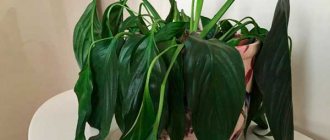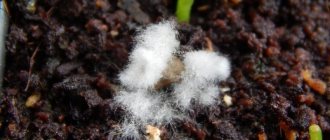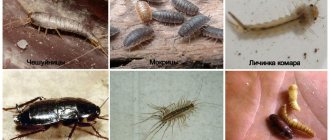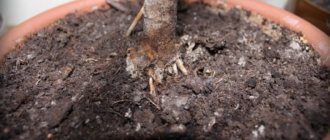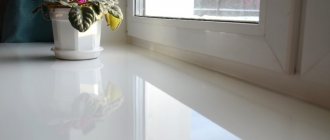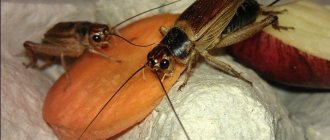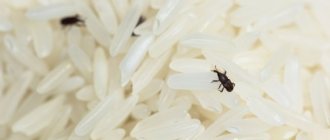Real Egyptian Lemongrass Tea Dried Ceremony (Lemon Grass, Lemongrass, Lemon Grass, Lemongrass), Natural Tea Additive, 100 g.
480 ₽ More details
Ahmad Tea Classic black tea, 200 g
166 ₽ More details
Vitamins for the heart and blood vessels
Almost every gardener is familiar with sciarids. The insect feeds on rotting plants, and the larvae are interested in the soil in which they settle. Thus, they cause harm. Sciarids are small in size, so at first glance they may seem harmless. This is wrong. Insects cannot immediately destroy plants, but they are carriers of various diseases.
Sciarida is a small flower midge
With a large amount of rotting organic matter, reproduction occurs even faster. Accordingly, the female lays eggs in the soil, from which larvae appear and eat the roots. As a result of exposure to insects, plants can die, so you need to know everything about sciarids - distribution, methods of disposal, prevention.
What does an insect look like?
Sciarides are a family of insects. This includes the fungus gnat or, in other words, the sciara fly. The insect represents the order Diptera.
The mosquito is small in size - up to 4 mm. The body is narrow and oblong in shape. The flying insect is black and gray in color. A characteristic feature is that the color becomes darker as they grow older. The fungus gnat has a round head with long antennae. The insect also has colorless fore wings. Despite this, they are endowed with the ability to fly.
The insect has small transparent wings
Biological characteristics of the fungus gnat
The sciarid fly is a small mosquito whose body length ranges from 1.5 to 4 mm. In young individuals it reaches two millimeters. The color of the outer cover of adult insects is black, while that of young insects is light gray. The fungus gnat has a well-developed front translucent pair of wings, thanks to which they can fly well. The hind wings have lost their original purpose. They have transformed into club-shaped halteres, so during flight the insect makes a characteristic squeaking sound. The sciarid's mouthparts perform a sucking function.
Adult sciarids do not harm plants because they do not feed. Under favorable conditions, insects reproduce very quickly. The female fungus gnat lays eggs on the surface of well-moistened soil or in clods of soil between the roots of indoor plants. One clutch can contain up to three hundred eggs. After a few days, worm-shaped, legless fungus gnat larvae emerge from them. Their body length can range from two to ten millimeters. It is translucent, with a clearly visible intestine and a characteristic black head. It can be used to distinguish representatives of flower pests from annelids. Sciarid larvae have gnawing mouthparts. They usually develop on rotting plant debris present in the soil. However, being in the flower pots of indoor plants, they may lack food substrates. Midge larvae feed on delicate food systems and underground shoots of flowers, causing irreparable damage to plantings. After some time, pupation occurs and the young fly emerges. Leftover shells decompose in the ground. Please note that they do not tolerate dry soil. Sciarid larvae removed from a moist substrate die within a short period of time.
Fungus gnat larvae
What stages of development does it go through?
Eggs are laid in moist soil. After 5–6 days, the larvae hatch. They have no legs and look like worms. If you look at the photo of sciarids, you will notice that the larvae are colorless (transparent), and the digestive system and black head are also visible. It is the dark color that distinguishes mosquito larvae from others. They can reach a size of up to 10 mm.
At this stage of development, insects cannot tolerate dry soil. If a person takes them out into the air, there is a high probability of the caterpillars dying.
After 7–14 days, the larvae pupate. The transition from pupa to adult occurs in 5 days. The life expectancy of adults does not exceed 7 days. But, despite such a short period, the number of eggs in a female can reach 300 pieces.
Prevention of appearance and reproduction
To prevent the appearance and introduction of sciarids, it is necessary to exclude conditions. favorable for their reproduction:
Do not over-wet the soil in your flower pots, and keep an eye on the amount of water in the trays of your potted flowers. If the water stagnates, the roots will begin to rot, and this is an excellent breeding ground for mosquitoes. The deposition of larvae can be prevented by keeping the top layer of flower soil slightly dry (about 2 cm for a medium-sized pot, up to 3-4 cm for large flowerpots). Use the top layer as drainage: gravel, small expanded clay. Sprinkle a few centimeters on top of your plant. Then, when watering, the water will quickly leave the top layer, thereby depriving the insect of the opportunity to lay eggs. When replanting or adding soil to a flower, use specially treated substrates; it is even good if the composition contains elements that are not very edible for sciriada: particles of pine needles, bark, coconut fiber or coarse fibrous peat. However, we should not forget about the plant’s need for any additive. You should not use soil for replanting flowers, the quality of which you are not particularly sure of. If there is any doubt that it may contain any pests, it should be frozen for 2 days in the freezer, and in winter simply outside. Clean and remove faded flowers, leaves, and rotten roots from the surface in a timely manner. Keep your house clean, make sure there is no food waste left, and promptly throw away spoiled foods that mosquitoes might “like.” To kill flying mosquitoes, you should treat the room with a special aerosol product. Spray the product on window sills, shelves, and racks. For safety, make sure that when spraying the product does not get into food or dishes.
Use with caution in a room where there is an aquarium or other pets. If the prevalence of bugs is high, it will be more effective to use chemicals to treat the contaminated soil with a solution. After taking measures to destroy fungus gnats, thoroughly ventilate the room and carry out wet cleaning.
You should know how to deal with thrips and scale insects on indoor plants.
Where can I meet
Sciarids are more common in Europe. Most often they live in house flowers. This place is the most beloved among the Sciarides. Insects settle in plants with moist soil. But it is possible that fungus gnats will appear in other places - the basement, the bathroom.
Read on topic:
Features of the life activity of ladybugs
14.11.2020
Description of chironomids and their possible danger to humans
14.11.2020
What do cutworms look like and what harm do they cause?
14.11.2020
What do goliath beetles look like and can they be bred at home?
14.11.2020
Midges can appear in high humidity
To get rid of sciarids, you first need to understand why they appeared in the room. The most common reasons:
- excessive humidity;
- plants are not properly cared for;
- purchasing an already infected plant;
- entry of insects through ventilation, windows or doors.
Attention! Fungus gnats love old pots, so they appear in them first. This also includes a poor drainage system.
After establishing the reasons why sciarids appeared in the room, it is necessary to take various methods against them.
General information
Every violet lover is familiar with these insects. Everyone knows the little flies that hover over potted plants. Sometimes there are almost none, sometimes there are hundreds. Who are they, these eternal companions of the gardener?
Photo 1. Female sciarid.
Soil mosquitoes of the family Sciaridae are distributed everywhere, but at the same time, they remain the least studied group in the order of dipterous insects (Diptera). Sciarids (Sciaridae) are living fossils; they are one of the most ancient groups of dipterous insects. Due to their small size and hidden larval phase, representatives of sciarids have not attracted the attention of researchers for a long time. Currently, this family has about thirty genera, uniting more than 1,700 species described by science. According to the most conservative estimates of experts, another 20,000 species will be described in the near future, mainly from tropical regions of the Earth. The fauna of Europe is less rich in sciarids - there are just over 600 species.
Most often we encounter representatives of the genera Sciara, Lycoriella and Bradysia. Externally, without a microscope, trying to distinguish them is almost useless. Some are a little less, others are a little more. Some are blacker, others are just a little lighter. Sciarids enter the volumes with plants either with the soil, or adult females, entering the room from the street, lay eggs in the moist soil. It is almost impossible to get rid of fungus gnats once and for all. If conditions exist for their feeding and reproduction, they will come to you again as soon as the chemicals expire.
Overmoistening of the substrate and a high content of quickly decomposing organic matter in it are the main conditions under which sciarids feel most comfortable and begin to multiply quickly.
Why is it dangerous?
It should be noted that no sciarid attacks on humans were observed. They do not suck blood or bite. To confirm these facts, American scientists specifically conducted research. Ground mosquitoes do not fly near your face. But, despite this, they can carry various dangerous diseases that harm not only plants, but also humans. For example, the disease can be transmitted through contact with infected flowers. Or if a person inhales mold spores that are carried by sciarid flies.
Mosquitoes negatively affect plant health. If larvae appear en masse in the soil, flowers will not develop and their appearance will deteriorate. Accordingly, they become lethargic. It can even go as far as lack of flowering. If a person notices all these signs in plants, it is necessary to quickly get rid of the insects.
How to find out if your indoor flowers have midges
If the plant has lost its original healthy appearance and has stopped growing, it means that it is most likely infected with some kind of disease or pest. First of all, if you suspect that the flower is suffering from fungus gnat damage, you need to shake the flower pot. Black or gray flies will immediately begin to scatter from the infected plant.
Many beginners in floriculture often confuse common household midges (drosophila) with sciarids. Fungus gnats have a larger, graceful and slender body, while fruit flies look like small flies with a thick abdomen.
If you are sure that there are midges in a flower pot, you need to start examining the soil . You need to pour enough water into the flowerpot so that it stands about one centimeter above the substrate. After some time, sciarid eggs and larvae will begin to swim in it.
How to fight
The fight against such insects must be comprehensive. That is, it is necessary to destroy mosquitoes at all stages of development. There are various methods for controlling sciarids, they are listed in the table.
| Name | Description |
| Special aerosols | The most popular are Raptor, Raid, Dichlorvos. It is better to place food, clothing and other items in a drawer before spraying. Furniture can be wrapped in film. The disadvantage of this method is that you need to leave the room for a while. You should also remember that such aerosols are harmful to pets, so they also need to be isolated for a while |
| Treatment of window sills, shelves and other places with plants | This method is used as a preventive measure against surviving insects. After spraying, wash the area thoroughly with soap and water. |
| Application of insecticides | They use Actellik, Aktaru, Fitoverm, Karbofos. Before use, chemicals should be diluted with water according to the instructions. Next, mix everything thoroughly. The resulting solution is poured into the soil. Course of use – 2 times. The interval between applications should be at least 7 days. For the best effect, it is not recommended to water the plant for 1 - 2 days after use. |
| Fighting sciarid larvae | Bazudin, Thunder will do. The top layer is replaced with a new one containing granules. When watering, the product dissolves and pests are destroyed. |
| Duct tape | Can be bought for flies. If this is not possible, you can use tape |
| Anti-cockroach products | For example, Mashenka’s pencil. It is applied to the top of the pot. Another use is to crumble a pencil and sprinkle it into the soil. |
| Egg fight | You can use Citropak in tablet form. To prepare, you need to dilute the drug in 5 liters of water. Pour the resulting solution into the soil. After the initial treatment, the result will be noticeable. For better results, the procedure can be repeated 1-2 more times. |
Reasons for appearance
These pests enter your apartment from the environment when you bring new plants into your home. Often the cause of contamination of a home flower collection is soil from the garden or from a store that has not undergone a disinfection procedure.
On a note! As a rule, the first to be affected are plants that are in old pots with poor drainage systems.
And as long as favorable conditions exist in the form of waterlogged soil and a large amount of rotting plant debris, the fight against sciarids will be difficult. Therefore, first of all, you should remove the cause of their appearance and only then take steps to eliminate them.
What are the folk methods?
In addition to chemicals, there are traditional methods of combating fungus gnats. Most Popular:
- Collecting flying insects using a vacuum cleaner;
You can use a tobacco-based solution
- Place repellent products next to the pot. For example, dill, garlic, orange. With this method, insects will not be able to reproduce. When they enter the house, they will immediately fly away, as the smell frightens them.
- Purchase plants intended for feeding sciarids. For example, Nepenthes. The negative aspects of the technique are that the plant requires complex care.
- To process flowers, use a soap solution. To prepare, mix the ingredient with 1 liter of clean water. The plant needs to be treated at least 5 times with an interval of 7 days.
- Prepare tobacco solution. You need to take the ingredient in dry form and dilute it in 1000 ml of water. Leave for 2 days. Filter and add another 2 liters of liquid. Use the prepared solution up to 5 times. The interval must be at least 7 days.
- Use ash. After application, the environment becomes alkaline and sciarids cannot live in such a place. The ash must be scattered on the surface of the pot. When watering a plant, it will form an alkaline environment.
This video will help you learn more about indoor midges:
Control measures
The fight against sciarids, podurs, and soil mites is Sisyphean work. They will always appear, again and again, and the harm from them is insignificant. You need to pay attention to sciarids only when they become a real problem (when there are hundreds of flies, and the soil is literally moving with worms). Mass reproduction of these animals indicates poor agricultural technology, which needs to be corrected. A good result is obtained by adding ligocene (crushed coconut peel) to the soil composition. Water as the substrate dries. Avoid using soil with a large amount of undecomposed components (leaf dust and plant debris).
Before you start fighting, make sure that the flies flying in your apartment are sciarids, and not Drosophila (fruit flies) that flew to you due to the smell of stale jam, compote or overripe fruit.
If you still have to reduce the number of sciarids, you can use systemic insecticides (spray the soil with a solution). A good result is obtained by adding citromon or askofen to the water for irrigation (half a tablet per 3-4 liters of water). The drug Regent effectively destroys fungus gnat larvae. If you got Regent 80%, then 1 g of powder per 10 liters of irrigation water, if Regent 25, then 3 ml of the drug is diluted in one liter of water (30 ml/10 l).
When preparing the soil for sowing Gesneriaceae seeds, the soil should be well steamed. Seedlings are grown in hermetically sealed containers. It is desirable that even the drainage holes of such containers are inaccessible to flies.
If prevention
To prevent the appearance of insects indoors, certain rules must be followed. Namely:
- Before planting a plant, pay attention to the soil and try to always check it for cleanliness; there should be no plant residues;
- It is advisable to first water the new soil with potassium permanganate (solution) and cover it with charcoal;
- if you need to buy a new pot, after purchasing it, it is advisable to wash it in hot water and soap and, if possible, treat it with potassium permanganate;
- take care of drainage;
- there is no need to add too much organic fertilizer, such as manure;
- do not use bad water for irrigation, for example, some people, in order to save money, take liquid from the aquarium and the use of water with a green coating is especially prohibited;
- do not pour coffee or tea leaves into the tray;
- each time you water the plant, remove excess water from the tray;
- examine the plant for dead parts and remove them.
It is best to fight insects immediately after they appear. If you neglect this point, after a couple of days you can see not just one midge, but many. Moreover, the female will lay eggs, and larvae will appear from them. It is necessary to fight sciarids at any stage of development.
Why do flowers get midges?
Black flies can appear in the house for several reasons:
- Flying into an open window or through a ventilation grill from the basement;
- Finding yourself with newly purchased plants;
- Reproduce in contaminated soil that is not disinfected before planting;
- Due to acidification of the soil when it is too waterlogged or in the absence of sufficient drainage;
- Abuse of organic fertilizers.
At what temperature do sciarids die?
Sciarid flies (fungus gnat)
Sciara fly, order Diptera -
family Sciaridae (sciarids) a small black-gray mosquito about 1.5 mm long with a narrow body and a rounded head. The insect has only a front pair of transparent wings; the hind wings are transformed into club-shaped halteres. Mouthparts are sucking. They fly well and, in suitable conditions, easily reproduce in large numbers.
Adults do not harm plants, but lay small eggs on the surface of moist soil. Larvae later appear from the eggs - translucent, legless worms with a black “head” measuring 8-10 mm. The mouthparts are gnawing. Typically, the larvae develop in the soil on rotting plant tissue. However, indoor culture often lacks food substrates, as a result of which tender young roots and underground shoots of plants can be gnawed, which poses the main danger.
What is important to know about fungus gnats in order to successfully fight them?
There is no need to panic if large numbers of flying flies suddenly appear at home. First, you should try to figure out who they are and where they came from, and depending on the result obtained, choose a method of getting rid of them.
Do not confuse them with the fruit fly Drosophila! First, look at the flying specimens and make sure that they are sciarids. Mosquitoes, compared to Drosophila, are graceful and slender. The head and chest are larger than the body, the abdomen is thin, approximately 0.5 mm. Drosophila is a fly, albeit a small one. The abdomen has the proportions of a fly, thicker, without a sharp difference between it and the chest. It appears more often on spoiled fruits, hence the name.
Now, after digging up the soil a little, see if there are sciarid larvae there. If not, then everything is great: it is enough to destroy only the flying mosquitoes, which is not so difficult.
Reasons for appearance
As a rule, flies come to the grower with soil contaminated with their larvae, from which, under favorable conditions, adult flying insects hatch.
It is important to check the quality and carry out preventative treatment of the soil in which you plant the plant, but the presence of flying flies may not be related to your actions.
Often flies are a signal of an unfavorable environmental situation in the house. They did not necessarily come from the pot of a plant standing on the window. Like most insects, midges fly to the light, that is, to the window, next to which they enjoy sitting and flying, but they could have flown in from the outside.
These insects love a warm and humid atmosphere, so they live with great pleasure in damp basements of residential buildings and can visit through hoods, pipes and ventilation shafts, especially in the toilet. Having flown into a gardener’s apartment, they may well take root, laying eggs on the surface of the soil of a recently watered plant and infecting it with their larvae.
Sciarids can also covet food waste (spoiled fruits, vegetables) in the trash can, and linger in the winter vegetable reserves (potatoes, onions). If you are “lucky”, they can find a home in a completely unexpected place, if your apple has rolled somewhere and remained unnoticed, for example, an apple (or its core, which is even worse). Here, treating your flowers with chemicals will not help; you must find and, if possible, eliminate the source.
External signs of sciarid damage
Small black flying insects appear in the room, fluttering from disturbed flower pots. However, the presence of flying individuals does not mean that there are larvae in the soil that harm the plant (larvae are an already advanced version of the problem).
The larvae are usually immediately visible if you dig a little into the soil. The soil itself is characteristically crumbly and, when dry, has a consistency similar to sand. The infected plant looks bad and stops growing.
Prevention
If the sciarids find favorable living conditions in the apartment, there will be no end to them. Therefore, you will have to find out the “tastes” of these insects and try to take preventive measures against their appearance and reproduction:
The main rule is to not allow the soil in the pots to become waterlogged.
If you constantly flood your plants, then adjust the watering: waterlogging the soil in pots creates conditions for the active reproduction of sciarids. Never water a plant again unless the top soil in its pot is dry! If you accidentally water the plant too much, drain the excess water from the pan and thoroughly dry the earthen ball before the next watering.
When insects appear, it is important to prevent their further reproduction and spread.
Adult flying individuals lay eggs on the moist surface of the soil, from which a large number of larvae live in the soil. If the soil surface is dry, the masonry will die, so keeping the top layer of soil dry is an excellent preventive measure against sciarids. Dry the top layer of soil regularly (1-2 cm in medium-sized pots, up to 3-4 cm in larger ones).
You can also use top drainage: cover the surface of the soil in the pot with a layer of fine expanded clay, gravel or coarse sand. After watering, such a layer quickly becomes dry and deprives insects of the opportunity to lay eggs.
Sciarids, like all insects, reproduce easily and very quickly - when the first flying individuals appear, take urgent measures to remove them.
Promptly remove dead parts of plants (withered leaves, flowers, underground parts) remaining in the pot. Monitor the state of the supply of vegetables and fruits in the apartment and your food waste, promptly remove and throw away everything that could become “home and food” for sciarids.
Use sterilized substrates for your plants.
It is good if the soil contains components that are “unpalatable” for flies: coarse fibrous peat, pine needles, bark, coal, coconut fiber. However, it must be remembered that the composition of the soil should first of all be selected in accordance with the needs of the plants, and not the flies.
If you are not sure about the cleanliness of the soil, spill it with water and freeze it for at least a few days (in the summer - in the refrigerator, in the winter - outside or on the balcony). It is safer to leave the soil prepared for future use on the balcony for the winter, and use it for replanting in the spring. Long-term freezing is a good remedy for many soil pests.
Do not use easily decomposing organic substances as fertilizers (tea leaves, coffee, fish bones, tree leaves, “meat” water, milk, kefir) - with further rotting in the pot, excellent conditions are created for the active growth and reproduction of sciarid larvae.
Do not allow water to stagnate in the pot, otherwise the roots will rot.
If, after all, the roots have rotted, then take measures: remove the plant from the pot, thoroughly rinse the roots in running water, trim off all rotten and damaged parts with a clean knife, dry plants with large or fleshy roots and treat with crushed charcoal or sulfur powder. Then replant the plant in slightly moist, fresh soil and water as little as possible for some time after replanting. It is better not to water a plant with fleshy roots at all: damaged by sciarid larvae, weakened roots are defenseless against rot pathogens.
In the spring, before sowing seeds, it is advisable to carry out a full range of preventive measures to prevent the appearance of fungus gnats in your home. Sciarid larvae greatly harm hatched seeds and young seedlings.
Ways to fight
A set of measures aimed at destroying all forms of fungus gnat
It is not necessary to perform all the suggested actions - determine the extent of damage to your collection and select what is necessary.
Important: approach the problem carefully and carefully. If you fight only larvae or only flying mosquitoes, there will be no benefit. When starting the “battle”, try not to deprive anyone of your attention, and then you are guaranteed success.
* Determine where and how they could get to you and check all possible places where mosquitoes “reside”. Carefully remove all organic debris and dead parts from the plants.
* If your mosquitoes are coming to you from the basement of your house through hoods, pipes and ventilation shafts, you are very unlucky. It is almost impossible to eliminate dampness in the basement, so mosquitoes, unfortunately, will become your regular guests.
* Install a very fine mesh on the ventilation grilles, through the holes of which mosquitoes will not be able to get into the apartment.
* Check the soil in the pot - if it is heavily infested with larvae, change it to a fresh, breathable soil mixture suitable for the composition of this plant.
* Check the root system of the plant: if there are signs of root rot, take action
* Gather all the plants in one room. It should be well ventilated, and it is better to have a high-quality hood.
* Treat the premises with one of the means against flying insects in the form of an aerosol, for example, “Raptor”, “Raid”, “Neo-dichlorvos”. Make sure that there is no food, utensils, personal items, etc. in the treatment area. Cover the aquarium, remove the cage with birds or small animals.
* Also spray the racks and window sills on which the plants stand to avoid “revenge” from surviving specimens in the future. Don’t forget to thoroughly clean all surfaces with soapy water and rinse several times with clean water.
* Any available insecticide is suitable for chemicals: Agravertin, Aktara, Inta-vir, Fitoverm, Aktellik, Kinmiks, Karbofos. Dilute the working solution according to the instructions and thoroughly water the soil in the pot twice with an interval of 7 days. After treating the soil with a pest control drug, you should not water the plants for at least 3-5 days, so as not to weaken the effect of the drug by reducing its concentration and being washed out of the soil coma.
* For larvae in the ground, soil insecticides are used, for example, Bazudin, Grom-2, Pochin. In pots infested with sciarid larvae, remove the top layer of soil (about 3 cm) and replace it with the following mixture: new breathable soil and several Bazudina granules. Or simply scatter the granules over the surface of the earthen clod and carefully mix them with the top layer. When watering, the drug will dissolve and penetrate into deeper layers, killing the larvae living there. However, it is convenient to use such products if there are few infected plants, otherwise it will take a very long time to lay out and mix the drug in each pot.
* Leave everything for a while, preferably overnight. Close the door tightly and leave the room. In the morning you can move the plants to their places.
* In the room where you carried out the treatment, open the windows or turn on the hood for a long time. Collect the “bodies” of the flying representatives of this pest that fell in the unequal struggle, and clean the premises.
You can get rid of flying insects in several ways:
*Collect with a vacuum cleaner.
* Treat the room with a drug against flying insects in aerosol form (“Raid”, “Neo-dichlorvos”, etc.).
* Use a special sticky fly trap tape hanging near the plants. Advice - stock up on sticky fly traps in the summer: in winter there are no traps in stores!
* Use “scotch tape” as a last resort: place small strips with the adhesive side up next to or on the pots.
* Close the windows and turn on one or more fumigators for a long time (depending on the size of the room and the number of plants), placing them as close as possible to the cluster of plants. You can use different plates, “Raid”, “Fumitox”, etc.), the main thing is to change them quite often, about once every 1.5 - 2 hours.
* An unconventional way: plant nepenthes, an insectivorous plant that can now be found in flower shops. It is supposed to “eat” all the midges. In principle, “there is” - it will be there, but not all of them, but only those who want to get into his jug. In addition, Nepenthes itself is not so easy to keep indoors.
* Sprinkle crushed Mashenka chalk (for cockroaches) or draw stripes on the top of the pots.
* Cover the plants with fresh citrus peels, pieces of garlic, branches of incense, sprinkle with dill, and coat the pots with anise oil. All of the above must be updated frequently. This method is effective if a couple of insects accidentally flew into your area and have not yet had time to get used to it, but, unfortunately, this moment is very difficult to detect.
Folk remedies for flying insects:
* Infusion of tobacco or shag – 40 g. dry tobacco infused in 1 liter. water for two days, then filter and add another 2 liters. Water. Spraying must be done 4-5 times every 5-7 days.
* Soap solution – 20-40 g of soap shavings are dissolved in 1 liter. water. Spraying must be done 4-5 times every 5-7 days.
To destroy (prevent) egg laying by insects, it is recommended:
* Replace the top layer of soil in the pot (about 3 cm) with looser, dry, sterilized soil.
* Dry the top layer of soil (1-2 cm in medium-sized pots, up to 3-4 cm in larger ones). However, keep in mind: not every plant can easily tolerate drought! And sciarid larvae can “sleep” in dry soil for quite a long time, so they will actually disappear for some time. This method is good to use for preventive purposes.
* Use top drainage: cover the surface of the soil in the pot with a layer of fine expanded clay, gravel or coarse sand up to 2 cm thick. Such a layer quickly becomes dry after watering and also deprives insects of the opportunity to lay eggs, while the root system of the plant will not suffer from drying out. You can also cover the soil with a circle of paper cut exactly to the size of the pot.
* A good effect can be achieved if you spill the soil in pots several times with a light pink solution of potassium permanganate.
…………
mod ol@
16
